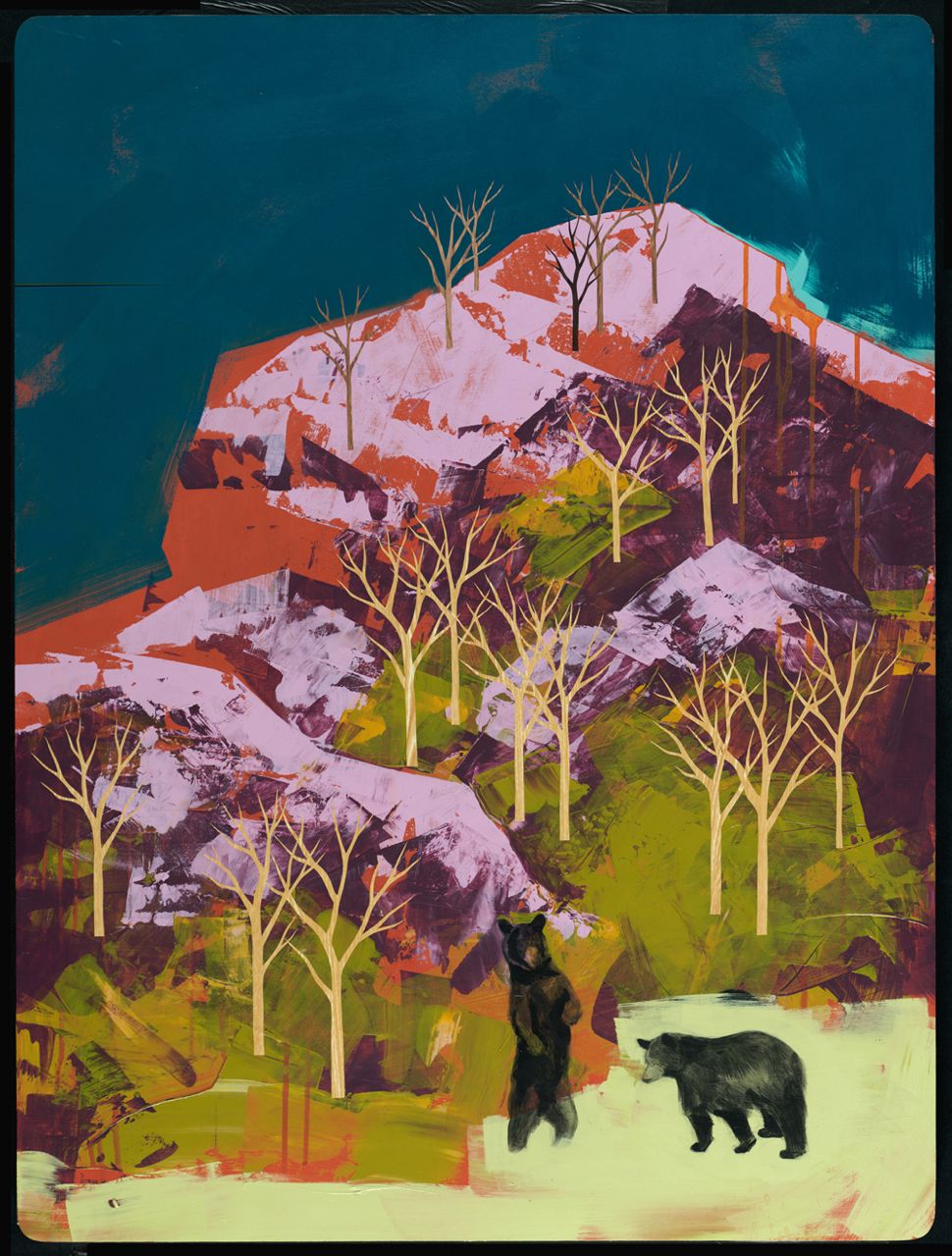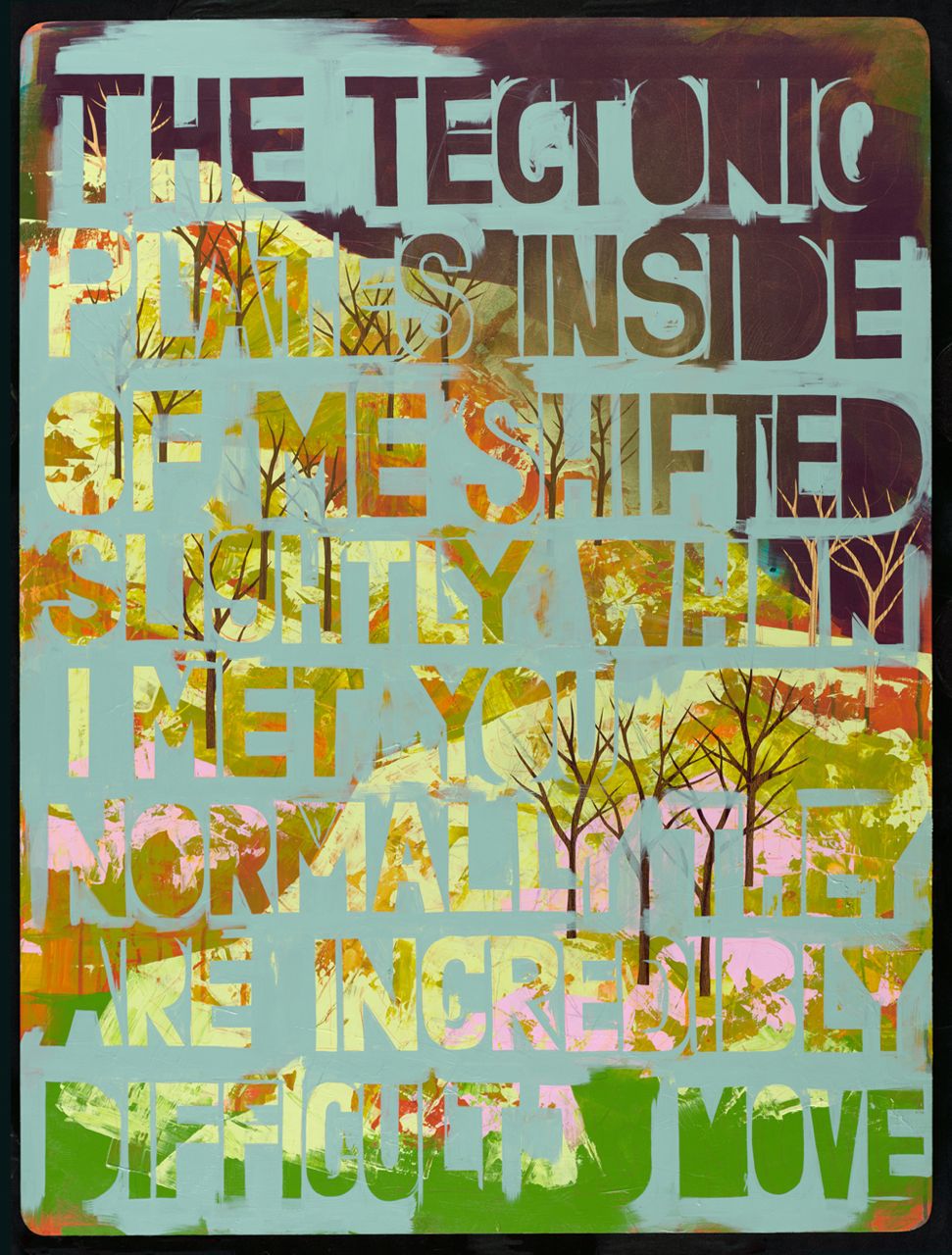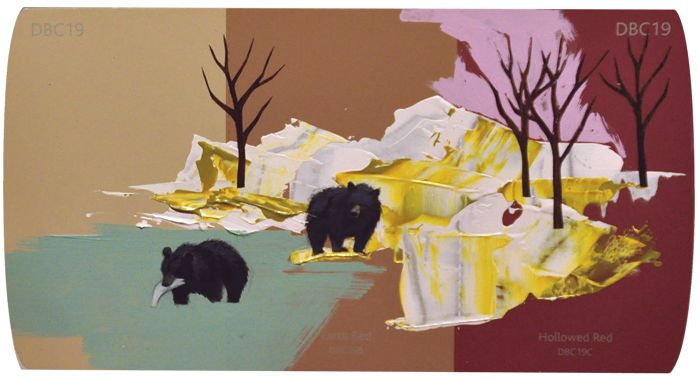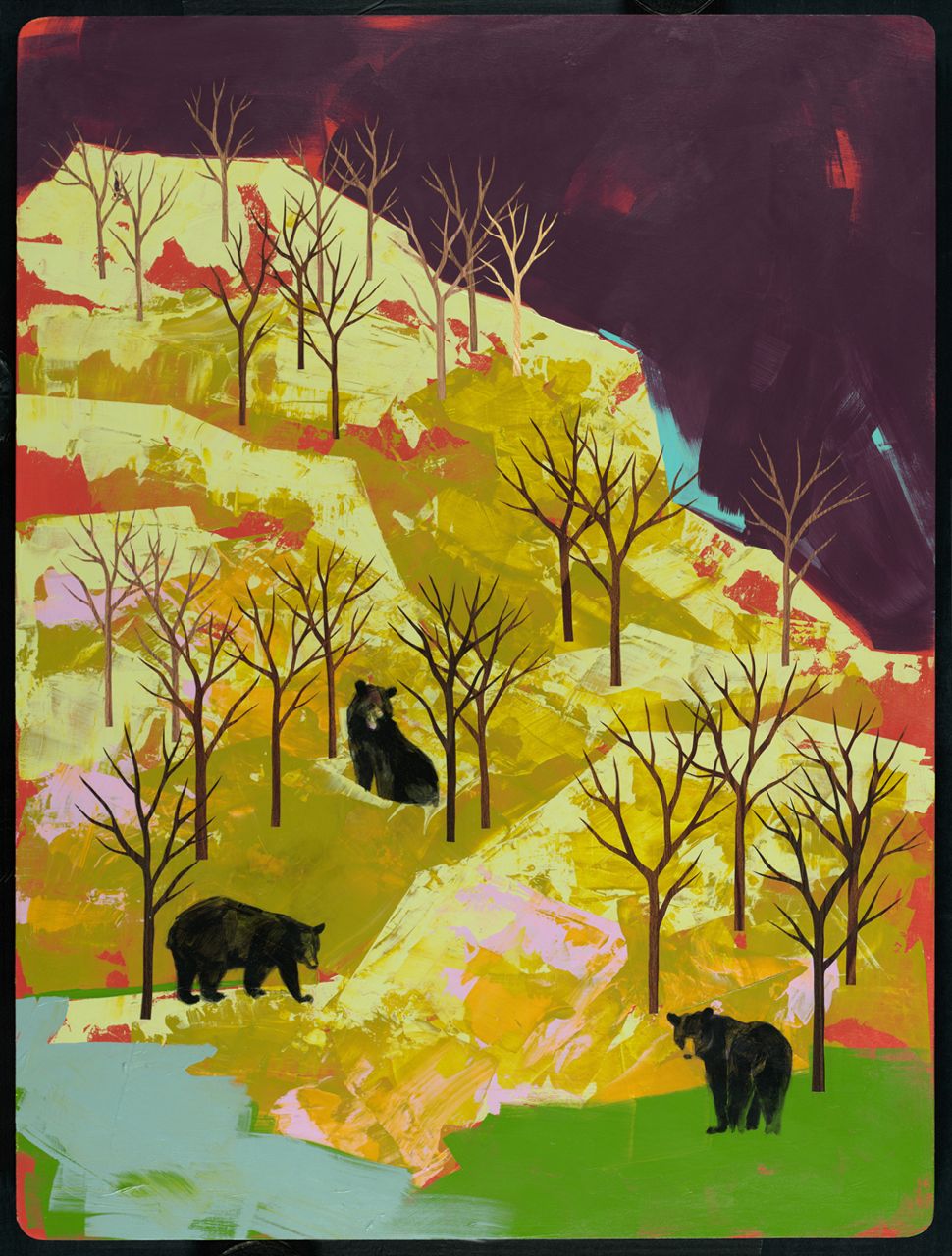Seonna Hong is a Los Angeles-based multi-talented painter, illustrator, writer, animation art director, and Emmy winning artist that we have admired and written about here on AM in the past. We last caught up with her at last year’s Art Basel in Miami where we quite enjoyed a showing of her new paintings. She graciously agreed talk with us about the many facets of of her work, her inspirations, her experience working with Murakami, and more in an interview.
Questions and answers after the jump…
Arrested Motion (AM): We recently had the opportunity to enjoy your work at the PULSE Art Fair during Art Basel Miami Week at the Lebasse Projects booth. Your recent paintings seem to moving in a less figurative direction and for the first time, we saw some text incorporated into your pieces. Is this a conscious decision your part and how would your describe the evolving nature of your imagery?
Seonna Hong (SH): It is both a conscious and an organic decision to have an evolving quality to my work… in much the same way that it happens in real life. Like when you meet up with an old friend that you haven’t seen for awhile, there are still recognizable traits that are familiar to you, but new things that have gone on in the meantime that continue to shape who they are. Sometimes it’s good, sometimes bad, but it’s propelling them through. Because my paintings represent what is going on for me personally, my visual vocabulary reflects that… the symbolism of the animals, the landscapes and the framework, and the children that represent a version of ourselves. In my recent paintings the vocabulary is still there, I’m just constructing the sentences a little differently. And then with the text, I’m being more literal (literally) (ha) with my narrative. While they are things that have been said to me, the sentiment is not exclusive to me.
AM: We noticed that some of your recent work has been created on “found” materials like paint chips. What led you to take this route and is there a philosophy behind utilizing these novel items as your painting surfaces?
SH: I had an interesting conversation with a studio mate of mine about what it meant to be creative… and that resourcefulness could be a large part of that. A really fun part. And how ordinary things could be transformed into something entirely different just in seeing it that way or putting it into another context. My daughter for example, sees faces in cars. She makes such a game out of it that she asked to drive around a parking garage “for fun.” So I started looking around my house and studio and wanted to see what looked fun to paint on. I had been collecting paint chips from hardware stores for years… because they looked like candy in a candy store… and decided to start putting them to use… other than as a sample paint color for a wall in your home.
AM: After finishing your education, you started your career by teaching art to children. This has no doubt helped you formulate your excellent book Animus that we currently own and of which we have gifted many of our friends and their kids. Of course, one of your most familiar and beloved characters is the little girl that your fans have been able to follow on her adventures through your paintings. Does this reoccurring girl represent you, or some part of you? What is it about children and the notion of growing up that is most inspiring for your work?
SH: Wow, thank you for the kind words about Animus and for passing it around to your friends. I’ve definitely been influenced by my years of teaching kids, my work in animation and of course being a mother. The little girl who is the protagonist in my paintings represents a side of me… the instinctual, unedited side… sort of like my “id” I suppose. I spend a lot of time on the side of my brain that grinds the gears of logic and reason… often to the point of overthinking everything… that it’s a relief to indulge that other side with my art.
AM: We followed with interest your show in Japan in 2008 with Kaikai Kiki and quite enjoyed the body of work you produced for that exhibition. How was your experience working with Murakami and showing in Japan as a solo artist for the first time?
SH: In addition to being a huge inspiration for me, Takashi Murakami has also been a mentor of sorts for me. He’s always been incredibly gracious and supportive and has challenged me to think of my work in a different way, both in scale and context. And, the solo show I did at his gallery in Tokyo was an extension of that. I was able to create works that were the largest I had done to date as well as an installation that I might not have tried had I not had the support to do so. I also approached this work in a different way and that had a lot to do with the conversations Murakami and I had leading up to the show.
AM: Aside from your career as a gallery artist, you have also spent time in the field of animation. How would you compare the differences and similarities, likes and dislikes when contrasting the two different types of creative output for you?
SH: I basically feel super lucky to be making a living as an artist. And, I feel even luckier that I have both an outlet for my personal work as a gallery artist, and that I get to continually learn and sharpen my skills as a production artist in animation. I like the collaborative aspect of animation… that it’s basically a big giant puzzle and my part of the puzzle is super fun. And, then I also love retreating back to doing my personal work. Both use a different side of my brain and provide a good balance.
AM: Any upcoming shows or projects you can share with your fans?
SH: I have a solo show that I’ll be getting ready for at LeBasse Projects in October!
AM: Thanks for you time Seonna and best of luck with the show.
Discuss Seonna Hong here.








